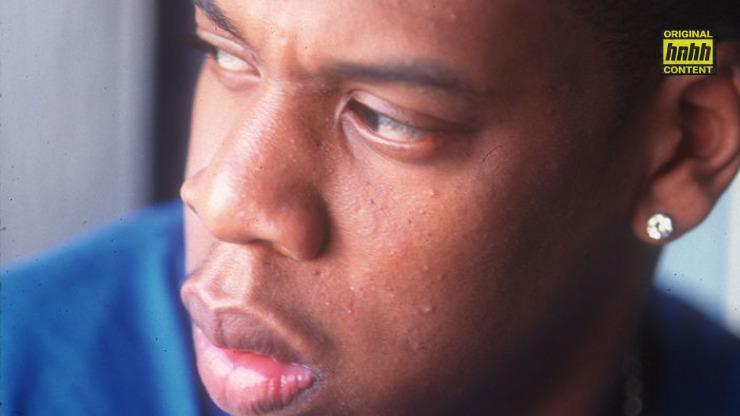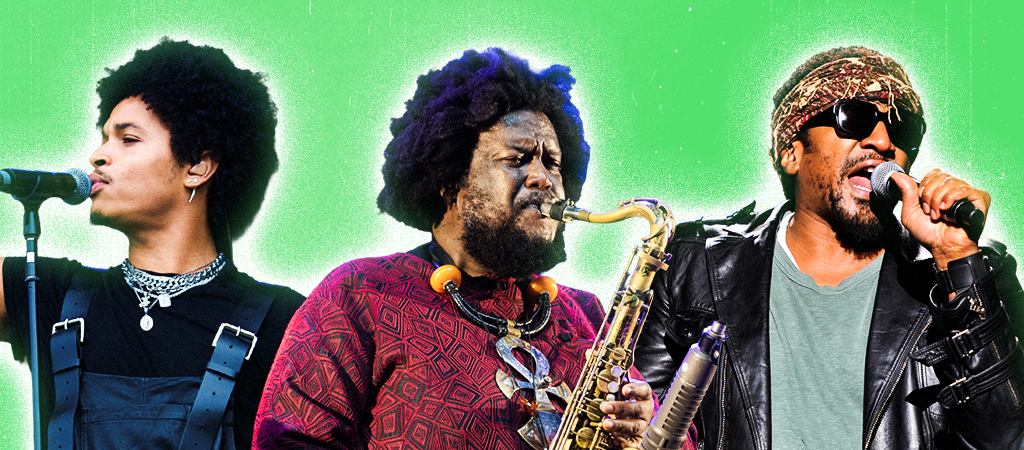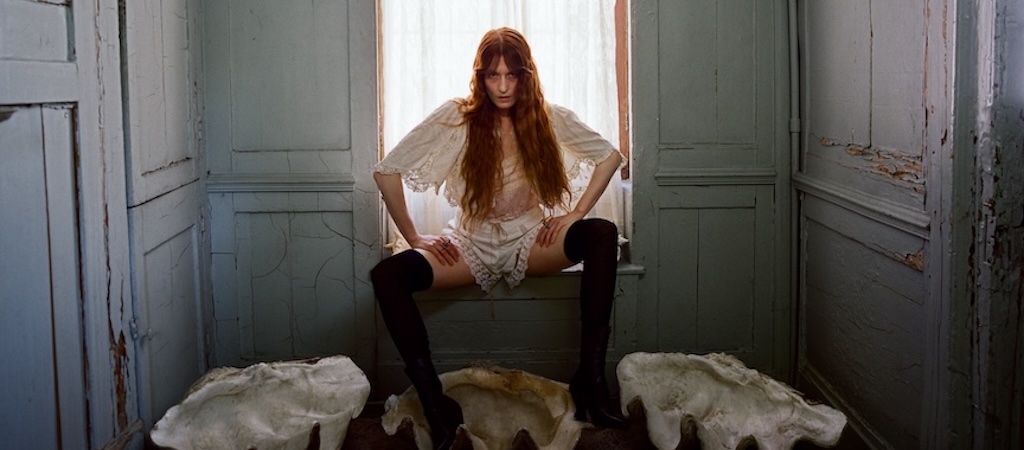Given everything he’s accomplished as hip-hop’s first billionaire, it’s almost hard to imagine Jay-Z as a free-spirited bachelor setting fire to the charts.
It’s not easy to displace oneself from the present. Though there will always be people interested in historical deep dives, many are content to live in the moment. For somebody who grew up in the last ten years, it might be difficult disassociating from his current status — that of a television mogul moonlighting as an Instagram troll. As he’s presently fielding heated takes over his involvement in the NFL, Jay-Z is another veteran rapper susceptible to this phenomenon. With his last two solo albums being 4:44 and Magna Carter Holy Grail, news surrounding the Jigga Man’s music has been relatively scarce or intrinsically tied to his wife, fellow megastar . Focus has also shifted toward his business acumen and philanthropy, but there are still many who remain steadfast that he is the undisputed GOAT.
While Jay-Z’s catalog speaks for itself, there’s one particular quality that deserves further appreciation. Of course we all love the maturation of Jay-Z, a happily ever after in the quintessential hip-hop rags to riches story. Yet with it came the end of an era — that of Bachelor Jay, a houndish man who all but mastered the art of the single. That’s not to say we lament Jay finding enduring love and companionship in the slightest; his growing family is a beautiful thing and paved the way for a newfound state of self-reflection. It’s simply to celebrate the songs that cemented him as both the best and biggest rapper alive. Songs that not only went off in the clubs, but were straight-up fun. Lead singles from an era where music videos were still an integral piece of the puzzle.

Raymond Boyd/Michael Ochs Archives/Getty Images
It started in 1997, when Jay slid through on his mischievous mack grind with “I Know What Girls Like.” The beat itself rides in carefree fashion, a groove that finds Jigga spitting lines like “on the place, jet ski’s park by the lake, no neighbors, make all the noise you want to make / Invite your friends over, let ’em make their way through the Benzes and the Rovers.” It’s a premise he’d go on to perfect. Inviting ladies to his mansion and dazzling them with his material wealth. That modus operandi would reemerge on one of Jay’s bounciest bangers of all time, “Can I Get A…” Released as the lead single of Vol 2. Hard Knock Life, the Irv Gotti and Lil Rob-produced track quickly became Jay’s biggest hit, hitting the 19th spot on the Billboard charts. His mafioso bars and pointed reflections on streetlife remained an album staple, but Jay was studying the formula for commercial success. Where an archetypical “single” might have been fumbled in lesser hands, Jay deted from his comfort zone and unveiled new layers of swagger.
And of course, “Big Pimpin’.” As of this day, the -produced collaboration still goes hard. Despite finding Jay on his most casually misogynistic tip, the track is pimpery in its purest form. “You know I thug ’em, fuck ’em, love ’em, leave ’em cause I don’t fuckin’ need ’em,” brags Jay, over Timbo’s playful woodwinds. “Take ’em out the hood, keep ’em lookin’ good but I don’t fuckin’ feed ’em.” Regardless of how the subject matter might sit with a modern listener, songs like “Big Pimpin” played a large role in affecting the public perception of Jay-Z. It went on to be the album’s most successful single, playing a major role in securing Life & Times Vol. 3 three platinum plaques. Unfortunately, Jay has since expressed public shame about his verse in Decoded, musing “what kind of animal would say this sort of thing? Reading it is really harsh.” Despite his retrospective regret, “Big Pimpin” remains an integral chapter in his catalog. And didn’t even want to do it, believing the record to be too “Pop” for his liking. He was only convinced through Jay’s assuredness in his vision: “Look, family: It’s going to be the biggest record of your career. If you don’t do it for yourself, just do it for me.’”
The Dynasty: Roc La Familia served as a showout for the burgeoning Roc-A-Fella Movement, but one of the most enduring tracks happens to be a Jay-Z solo cut. “I Just Wanna Love U” marked the first time Jay saw instantaneous success on the Billboard hip-hop singles chart, hitting number one upon release. It also sparked the dawn of a beautiful musical friendship for Jay-Z and The Neptunes, who would follow the groundwork of “Give It 2 Me” for years to come. Once again, Jay was content to live his best life in luxurious fashion, using his wealth as a barometer for female interest. “I’m a pimp by blood, not relation y’all be chasin’, I replace em,” he boasts, picking up where “Big Pimpin” left off. “Drunk off Cris’, mami on E, can’t keep her little model hands off me.” The man had his vices. But damned if the people didn’t love it. Remember that Jay was always murderous on tracks for those who wisely copped his albums. For the mainstream audiences, however, his nocturnal proclivities kept him closer to sex symbol than wizened hustler.

George De Sota/Getty Images
The Blueprint felt like a turning point, a triumphant ride into a new chapter of his story. The evolution was largely felt within the production, handled for the most part by Roc-A-Fella innovators Just Blaze and a young Kanye West on the come-up. That didn’t stop Jay from revisiting some of his favorite topics, lacing a back-to-back salvo of “Girls, Girls, Girls” and “Jigga That N***a” to ease the transition. Considering that 2001 is around the time he began his relationship with Beyonce, it feels fair to call the aforementioned two songs a bachelor party of sorts. One final farewell to old habits. Classy though “Girls,” may have seemed on the exterior, in reality it felt closer to a drunken player gazing wistfully at a well-notched bedpost. On the contrary, “Jigga That N***a” felt like a spiritual successor to “Can I Get A,” steered by braggadocio and a desire to bedazzle fine women. “Yellow wristwatch, Gucci flip flops, Six top model chicks – who is this hot,” he wonders, while said models stare mothlike at his glimmering bling.
Though Jay never stopped having fun on wax — lest we forget the raucous debauchery on songs like “N***as In Paris” and “Otis” — by that point he had all but moved on from his wild oat-sowing years. His recent contributions to ’s A Written Testimony suggest a desire to chase the prestige of exclusivity. Not to mention the fact that he owns an actual Basquiat. Priorities and interests changed, big business and billionaire brackets. Investments and deals. Married life and children. The days of string-free courtship were long gong, as evidenced by his remorseful reflections on “Big Pimpin.” This was a man determined to move as a role model; one capable of writing familial wrongs and steering fellow young hustlers into the prosperous realms of legitimate business.
It might be one of the most successful rebrands in hip-hop history — definitely the most subtle. You rarely hear people wishing he’d revert back to his older ways, and nor should they. But as a hip-hop fan, it’s important to look back on the wilder times, the early chapters in a long-running and genre-defying novel. One where, before you know it, a character undergoes a transformative shift in their arc. Let it speak to the organic nature of Jay-Z’s artistry.



